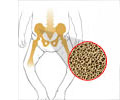Scientists at Keele University, Staffordshire, said that MS could be linked to difficulty in processing iron and aluminium.
Multiple sclerosis (MS) is an autoimmune disease. Immune cells destroy the myelin sheath that surrounds nerve fibers in the brain and spinal cord.
The myelin is very essential in transmitting the impulses across the body. Scientists at Keele University, Staffordshire, compared the levels of the metals aluminium and iron in the urine of people with MS and others without the condition.They said that MS could be linked to difficulty in processing iron and aluminium. The results showed significantly higher levels were found in both groups. The study compared 10 MS patients with the relapsing-remitting form of the disease and 10 who had the more advanced secondary progressive form with 20 people who did not have the disease.
The metal iron has been linked with acceleration of oxygenated damage and hence the iron levels were significantly higher in people with secondary progressive form of the disease.
On the other hand people with the relapsing-remitting form of the disease were found to have very high levels of aluminium. The levels of the mental were even higher than those seen in people with a condition known as aluminium intolerance.
Dr Christopher Exley, a bio-organic chemist at Keele said that from the animal studies it was found that myelin is the preferred target for aluminium. After myelin break down the myelin basic proteins can be detected in the urine.
But further tests are necessary to prove that iron and aluminium are linked to MS. As of now it is a known fact that MS is due to a combination of a genetic susceptibility and environmental factors.
Advertisement









